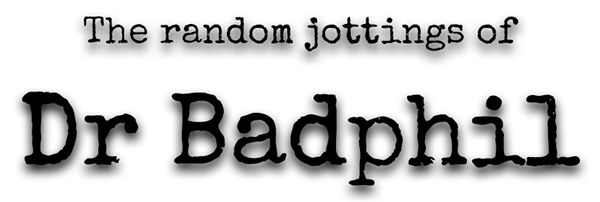
The best ideas for inventions are those that turn out to have already been thought of and produced. OK, that means you can’t make your fortune, but odds are you wouldn’t make the leap from an idea hatched in the shower to a production line anyway: and, anyway, you can go out and buy the thing with none of the hassle of being the next James Dyson. This happened to me with my genius solution to feeling all tangled up and constrained by sleeping bags when camping: just imagine if the sleeping bag had separate legs and arms? Well, as you probably know but I didn’t, you can buy these already…
To the case in hand, I’ve long been frustrated how stills cameras rotate all too easily on tripods, fixed (in the loosest sense of the word) by a single 1/4″ screw and lacking the additional pin hole found on camcorders. With stills cameras then moving into video and, for cinematic focusing, then needing follow focuses, the need for anti-rotation got all the more compelling. While camera companies vie about 4k and 8k, or 10-bit and raw on mirrorless cameras, nobody seems remotely bothered to drill a hole in the base to allow a second pin to stop rotation. An L-bracket or a cage can sometimes solve the problem, but, unless you need one, they are clunky additions, making access to controls and connections much harder and losing the carefully designed ergonomics of the camera. Also, many L-brackets and cages are just not rigid enough or not fixed to the camera well enough. With my compact – and cageless – follow-focus rig for my Lumix G9 I’ve found the old problem rearing its head, with the camera sometimes gradually rotating away from the follow focus to the point that, eventually, the gear disengages. So my genius ‘invention’? Well, simply a small Arca-style plate with a ridge at the front, forming a snug fit against the front of the camera: with the G9’s flip screen there is no value in a ridge or lip at the rear. Visions of finding someone who could mill one for me proved unnecessary since, as you will have guessed, the idea has already been thought of. Oddly, though, I haven’t simply missed something common, as such plates are incredibly obscure. Arca themselves sell an anti-twist plate (the blandly named ‘Kameraplatte 40mm’) as do Really Right Stuff (the equally unrevealingly named ‘B9 Multi-use bidirectional plate’), but both are extremely pricey for a small bit of metal with a lip (€63 and $49 respectively), need an allen key to tighten, and are hard to find in the UK. And then I came across the plates made by the Colorado Tripod Company in the USA: a perfectly sized 40mm plate (they do 60mm and 85mm-long versions too) with a bolted-on lip, and, unbelievably (since their well-made kit isn’t generally cheap), available for $10 (in my case £9 on Amazon UK). It turned up today, and is a supremely well-engineered plate, and even includes miniature bubble levels: you can tighten it with fingers or a coin. I might not have made my fortune with a new invention, but it hasn’t cost me a fortune either: I just wish I’d realized, and hunted for, the solution to camera twisting before.
UPDATE 18.6.2021. Well, sadly my optimism about the off-the-peg anti-twist plate wasn’t entirely merited: after a month or so in use I found the plate still undoing from time to time: not as badly as before, but enough to be frustrating. The reason for this is evidently the slot (instead of a hole) for the screw, also common to the more expensive offerings from Arca and Really Right Stuff, which, while designed to allow fitting of the plate to different cameras, allows the screw to loosen when used with a follow-focus. Doubtless, the designers didn’t have that in mind. What is needed, evidently, is a plate with a hole rather than a slot for the screw, which, of course, means a plate designed perfectly for the camera body. So, after all, it was necessary to DIY something: I simply added an aluminium bar at exactly the right point (with some very careful sub-millimetre measurements) to an existing Arca plate and – voilà – at last I have got there: in use it has proved reliably rigid.







No Comments